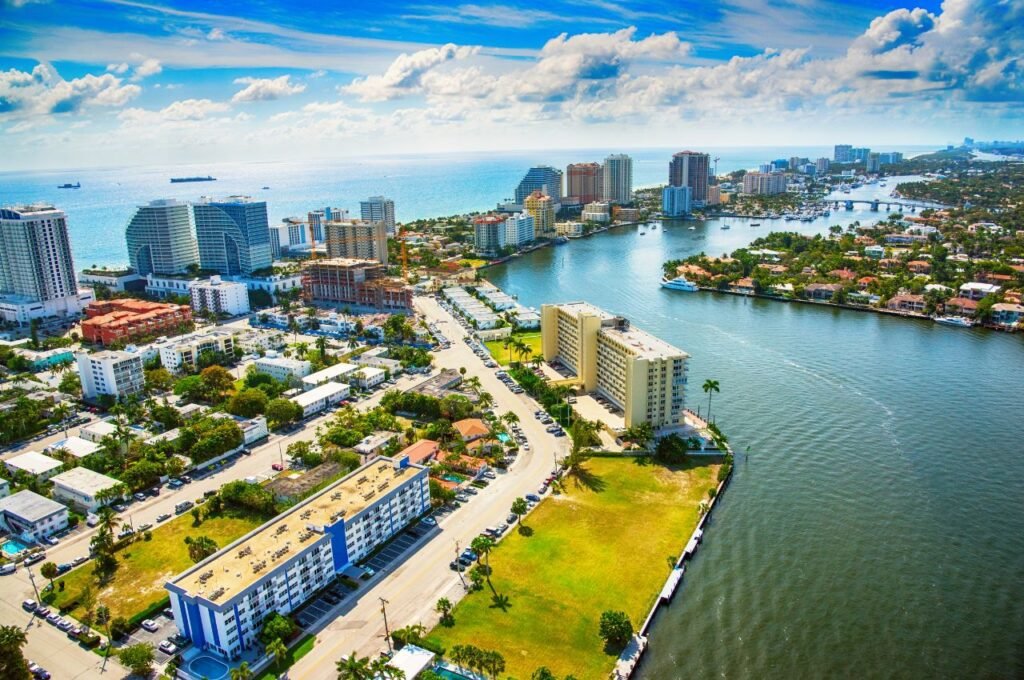Fort Lauderdale, Florida, has a rich history that has shaped it into the vibrant city we know today. The story of Fort Lauderdale begins long before it became a popular tourist destination, with roots going back thousands of years.
Early History
The first people to live in the area now known as Fort Lauderdale were the Tequesta Native Americans. They settled along the banks of the New River, taking advantage of the plentiful fish and other resources the river provided. The Tequesta lived in the area for many centuries before European explorers arrived.
Arrival of the Spanish
In the 1500s, Spanish explorers came to Florida. Although they didn’t settle permanently in Fort Lauderdale, their arrival marked the beginning of major changes for the Native American population. Over time, diseases brought by the Europeans and conflicts caused the decline of the Tequesta population.While learning about the history of Fort Lauderdale if you need any concrete related Services than contact Sunlit Concrete contractors.
The Seminole Wars
In the 1800s, Fort Lauderdale was at the center of the Seminole Wars. The U.S. government wanted to move the Seminole people out of Florida, leading to a series of conflicts. During the Second Seminole War (1835-1842), the U.S. Army built a series of forts in Florida, one of which was Fort Lauderdale. The fort was named after Major William Lauderdale, who led the soldiers in building it. The fort was abandoned after the war, and the area remained mostly uninhabited for many years.
Settlement and Development
After the Seminole Wars, the area began to attract settlers. In 1893, Frank Stranahan, who would become known as the “Father of Fort Lauderdale,” arrived. Stranahan set up a trading post along the New River, where he traded with the Seminole people and other settlers. He also operated the ferry across the river, which was a key part of the area’s transportation network at the time.
In the early 1900s, the arrival of the Florida East Coast Railroad made Fort Lauderdale more accessible, leading to a boom in population and development. The city was officially incorporated in 1911, and it continued to grow as a center for trade, tourism, and real estate.
The Boom and Bust of the 1920s
Like much of Florida, Fort Lauderdale experienced a land boom in the 1920s. Developers bought up large tracts of land, and many new buildings and homes were constructed. However, the boom ended abruptly when the real estate market crashed in 1926, followed by a devastating hurricane that same year. The city struggled economically during the Great Depression, but it eventually recovered.
World War II and Beyond
World War II brought new growth to Fort Lauderdale as the city became a major military base. The Naval Air Station Fort Lauderdale trained thousands of pilots, including former President George H.W. Bush. After the war, many servicemen who had trained in Fort Lauderdale returned with their families, fueling a new wave of growth.
In the decades that followed, Fort Lauderdale became famous as a tourist destination, known for its beaches, boating, and vibrant culture. The city also became a popular spot for college students during spring break, though in recent years, it has focused on attracting a more diverse group of visitors.
Modern Fort Lauderdale
Today, Fort Lauderdale is a bustling city with a rich cultural heritage. The city has worked hard to preserve its history, with landmarks like the Stranahan House and museums dedicated to telling the story of Fort Lauderdale’s past. The city’s diverse population and vibrant arts scene reflect its history as a place where people from different backgrounds have come together to create a unique and thriving community.
From its early days as a Native American settlement to its growth as a modern city, Fort Lauderdale’s history is full of fascinating stories that continue to shape its future.
FAQ's
The first people to live in the area were the Tequesta Native Americans.
Fort Lauderdale was named after Major William Lauderdale, who led soldiers in building a fort during the Second Seminole War.
Frank Stranahan, known as the “Father of Fort Lauderdale,” established a trading post along the New River and helped develop the area.
During World War II, Fort Lauderdale became a major military base, training thousands of pilots at the Naval Air Station.
After World War II, Fort Lauderdale grew rapidly, attracting tourists with its beaches, boating culture, and vibrant arts scene.




